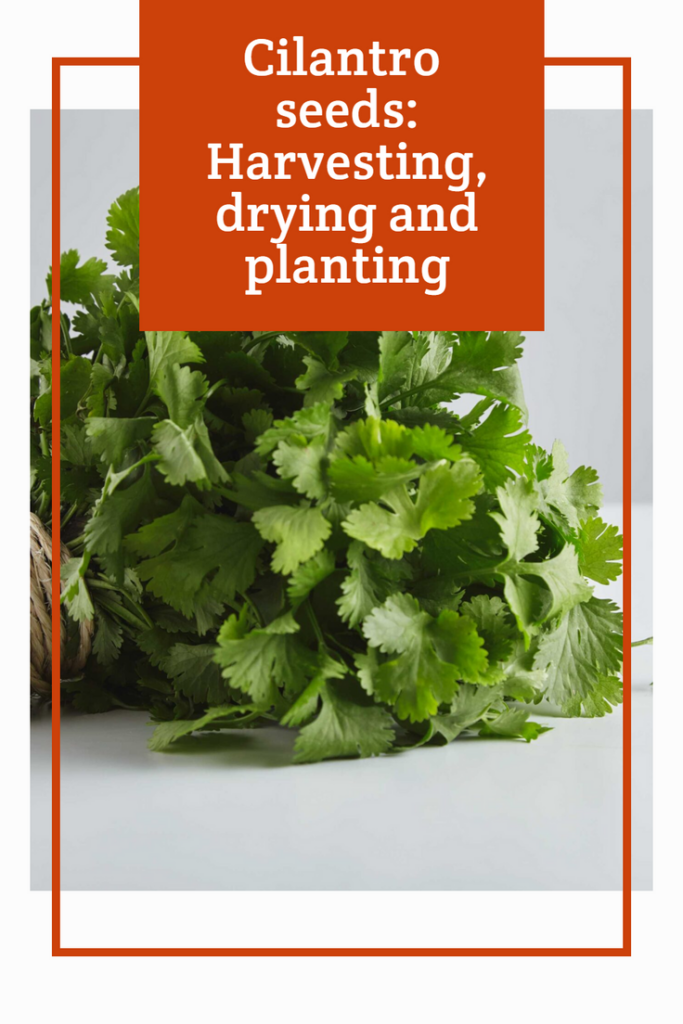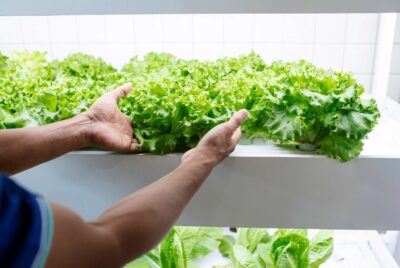Cilantro seeds: Harvesting, drying and planting
One of the herbs that I find most rewarding to grow is cilantro or also known as coriander (Coriandrum sativum). Its vibrant green leaves and the distinct aroma and flavor it adds to culinary dishes make it a must-have in my garden. Beyond the leaves, seeds of cilantro are a treasure trove of culinary and health benefits. In this article, I will guide you through the fascinating journey of harvesting, drying, and planting cilantro seeds, and why you should consider growing this wonderful herb in your own garden.
Understanding Cilantro Seeds
Before we delve into the process of harvesting seeds for future use, it’s essential to understand the life cycle of cilantro. Cilantro is a cool-season herb that goes through different growth stages, including vegetative growth, flowering, and seed formation. Once cilantro flowers bloom and begin to fade, they produce small, round seeds. These seeds can be collected and replanted, allowing you to maintain a self-sustaining cilantro garden. Look at the information below regarding the harvesting, drying and planting steps of cilantro seeds.
Harvesting
If you wish to maintain a self-sustaining cilantro garden, saving seeds from the healthiest and most robust plants is essential. Properly store the collected seeds and share them with fellow gardeners to spread the joy of growing cilantro.The best time to harvest the seeds is when the plant starts to turn brown and dry out after flowering. You’ll notice that the seeds change from green to light brown as they mature. To collect the seeds efficiently, you’ll need a few simple tools such as garden shears or scissors and a container. By carefully cutting the seed heads and placing them upside down in the container, you can easily catch the falling seeds.
Drying
Properly drying the seeds is crucial to ensure their longevity and usability. Air drying is the most common method and involves spreading the collected seed heads on a clean, dry surface for a few days. Alternatively, drying can be done using a dehydrator set at a low temperature. Whichever method you choose, make sure the seeds are completely dry before storing them to avoid mold or rot.
Storing
To keep the seeds viable for future planting, proper storage is essential. Place the dried seeds in a sealed container or airtight bag and store them in a cool, dark place. When stored correctly, seeds can remain viable for up to five years, allowing you to use them for planting or culinary purposes whenever you desire.
Preparing for Planting
Before planting the seeds, prepare the soil by ensuring it is well-draining and rich in organic matter. Cilantro thrives in full sun to partial shade, making it suitable for various garden locations. Consider the spacing and depth of the seeds, as overcrowding may hinder their growth and development.
Planting
Sow the seeds directly into the prepared soil, ensuring they are covered with a thin layer of soil. Water the seeds gently and consistently to keep the soil moist until germination occurs. Once the seedlings emerge, thin them out if necessary, giving each plant enough space to grow and flourish.
Caring for Cilantro Plants
Cilantro plants require regular watering, especially during hot and dry periods. Adequate sunlight and temperatures between 50°F and 85°F (10°C to 29°C) are ideal for promoting healthy growth. Applying a balanced fertilizer occasionally can boost the plant’s overall health and productivity. When harvesting cilantro leaves, be mindful not to damage the developing seeds to ensure a continuous harvest.
Benefits of Growing Cilantro
Apart from the delightful taste it brings to dishes, cilantro offers numerous health benefits. It is rich in essential nutrients and antioxidants, contributing to improved digestion and immune function. Additionally, cilantro can act as a companion plant, deterring pests and promoting the growth of neighboring plants in your garden.
Common Issues and Troubleshooting
Cilantro may encounter some common issues such as bolting, where it prematurely produces seeds, and attacks from pests and diseases. To prevent bolting, ensure the plant is in a cool environment and provide adequate water. For pest and disease management, employing natural remedies and regular inspection can maintain a healthy cilantro crop.
Harvesting Cilantro Leaves
While the focus of this article is on seeds, it’s worth mentioning the importance of harvesting cilantro leaves. The best time to harvest the leaves is before the plant flowers, as the flavor is at its peak. Carefully trim the outer leaves, allowing the center to continue growing for future harvests.
Last Words
Growing cilantro from seeds is an immensely rewarding experience for any gardening enthusiast. From the initial harvest of cilantro seeds to nurturing the flourishing plants, the journey is filled with joy and satisfaction. Whether you’re a seasoned gardener or a beginner, cultivating cilantro will undoubtedly add a delightful touch to your garden and culinary adventures.
FAQs
- Can I plant cilantro indoors?
- Yes, you can start cilantro seeds indoors and transplant them outside once they have grown a bit.
- How often should I water cilantro plants?
- Cilantro plants prefer consistent moisture, so water them regularly, especially during dry spells.
- Do cilantro seeds have any medicinal properties?
- Yes, cilantro seeds are believed to have certain medicinal properties, including digestive benefits.
- Can I use cilantro seeds as a spice?
- Absolutely! Ground cilantro seeds, also known as coriander powder, are commonly used in culinary dishes.
- Is cilantro easy to grow for beginners?
- Yes, cilantro is relatively easy to grow, making it a great choice for beginner gardeners.





